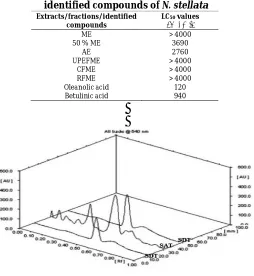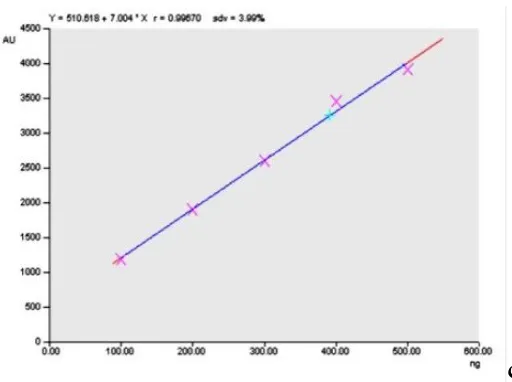QUANTIFICATION OF OLEANOLIC ACID AND BETULINIC ACID BY TLC AND BRINE SHRIMP LETHALITY ASSAY OF NYMPHAEA STELLATA WILLD. LEAVES
Full text
Figure



Related documents
Specifically, during the data collection and analysis phases of my study, I experienced a significant amount of tension which originated from the insider (emic) perspectives of
Using this tool does not have a significant effect on the duration of the lithotripsy process and this technique can be used simply simultaneously with the pneumatic
performed a phase I study to evaluate the effects of vaccination with the HLA-A0201-restricted NY-ESO-1b peptide on patients with high-remission-risk epithelial ovarian cancer,
It seems that not only decreased spontaneous GH secretion should be taken into account in short children with low IGF-I concentrations (leading to the diagnosis of neurosecre-
From a very large sample pool submitted to Chemical pathology laboratory for lipid and lipoprotein tests, serum indices for lipaemia, hemolysis and icterus were analysed.. One
On the Rothamsted soil the effects of K residues were some- times large, giving yields for several years as large as those given by Fresh dressings. The results of
یم دوش.. درکیور اب قباطم بیسآ ،سرتسا شزاس و یریذپ [ 32 ] عیاقو نینچ ، سرتسا س یارب ار جوز تیفرظ ،ییاز یم رارق شلاچ دروم شزا نهد .د شیازفا و رثؤم هلباقم رد یناوتان تروص رد
Many studies have found that camel’s milk does not cause the immune reactions or allergy caused by cow’s milk (El- Agamy et al., 2009; Zibaee, 2015).. This makes it suitable for